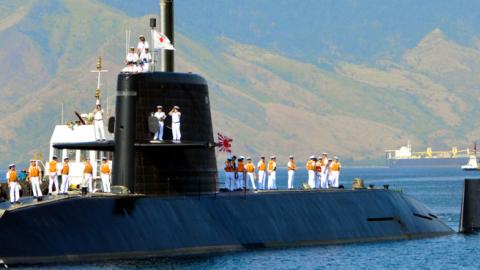Prime Minister Shinzo Abe worried that the South China Sea might become a ‘Lake Beijing,’ ... a sea deep enough for PLA navy to base their nuclear-powered attack submarines, capable of launching missiles with nuclear warheads.
Japan’s Cold War security priorities were very different from what they are today. During the Cold War, Japan was focused primarily on the “Far East,” which is what the Japanese call the northern Philippines. And the South China Sea was not very important and was not given serious attention. Now, however, the situation is completely different. The South China Sea is currently one of Prime Minister Shinzo Abe’s principal concerns. In 2012, the prime minister conveyed his ideas about the South China Sea in an article entitled “Asia’s Democratic Security Diamond,” which was published just one day before his second inauguration as prime minister. In the article, he wrote that “if Japan were to yield, the South China Sea would become even more fortified.”
Why is Japan now so concerned about the South China Sea? As Prime Minister Shinzo Abe wrote in his 2012 article, “the South China Sea seems set to become a ‘Lake Beijing,’ which analysts say will be to China what the Sea of Okhotsk was to Soviet Russia: a sea deep enough for the People’s Liberation Army’s navy to base their nuclear-powered attack submarines, capable of launching missiles with nuclear warheads.”
This is a very important observation. When China began to deploy nuclear-armed submarines in the South China Sea, it created a very dangerous situation that threatens to spiral out of control. The US president must take great care to avoid the worst-case scenario, because if there is a conflict between the United States and China in the South China Sea, and the US attacks Chinese facilities there, there is a real possibility that it could escalate into a full-blown nuclear war. With the situation so combustible, who can afford to take risks in the South China Sea?
It is important to consider what kind of conditions China needs to create in order to deploy nuclear-armed submarines in the South China Sea. It is not deterrence if American submarines are stationed alongside Chinese submarines and are able to come by and say “hello.” If China wants to establish a deterrent, it will need to ensure that its submarines are not detectable by any foreign ships, planes, or sensors. Therefore, China will need to prevent all foreign vessels that can detect Chinese submarines from entering its area of influence in the South China Sea.
Indeed, that is precisely what China has been doing. China has been expanding its capabilities one-by-one. China’s first step is to build artificial islands that serve as bases for submarines to form a sacred triangle (figure 1).
The second step is to deploy missiles, bombers, fighter jets, and warships to exclude other foreign ships and planes that can detect Chinese submarines. And the final step is to deploy submarines armed with nuclear missiles (figure 2).
China has not achieved steps one or two because it has not built artificial islands in the Scarborough Shoal. However, by using artificial islands that they have already built, China has deployed anti-ship and anti-air missiles that can repel foreign ships and planes, and it has deployed long-range bombers as patrol planes, some of which are even nuclear-capable (figure 3).
Additionally, China soon plans to construct a nuclear power plant that will supply Chinese forces in the area with electric power. After China sets up the nuclear plant, other countries will hesitate to attack it because of concerns of releasing radiation. This means that the nuclear plant itself will be an effective deterrent to attack. China will gradually squeeze other countries out of the South China Sea and complete its “fortress.”
Why does China want to turn the South China Sea into a “fortress,” as Prime Minister Shinzo Abe put it? China spent too much money building artificial islands for the reason to be merely economic, so there must also be a security rationale. It is true that China can use its presence in the South China Sea to defend its coastline, and there is good reason for China to do that: many cities and industrial areas along China’s coastline are critical for China’s economic development. One could imagine that China’s activities in the South China Sea are like a new type of “Great Wall.” But by that same logic, China would also construct similar fortresses in the East China Sea and Taiwan.
In November 2013, China set up a new Air Defense Identification Zone (ADIZ) in the East China Sea. This enables China to give air-cover to its naval ships and expand its area of influence. In addition, China has also constructed oil rigs in the area, many of which are equipped with radar. Japanese experts believe that these oil rigs will play a supporting role to Chinese naval and air deployment.
What should we do? How can we divert China away from its present course? China cannot hide their nuclear missile submarines in places where other ships and planes are able to detect them. Therefore, deploying submarines, anti-submarine warships, and anti-submarine patrol-planes will be very effective at stalling China’s growing naval influence. In this region, the US has the most influential navy, but American allies, such as the UK, France, Canada, Australia, India, and Japan can also send warships, planes, and submarines, and India can train new submarine forces in Vietnam. Therefore, these countries must cooperate, and must be proactive in demonstrating their presence in the region with naval, air, and land forces.















